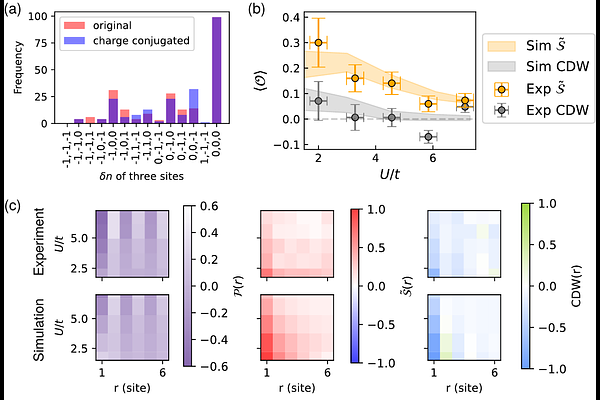Topological Phases, Criticality, and Mixed State Order in a Hubbard Quantum Simulator

Topological Phases, Criticality, and Mixed State Order in a Hubbard Quantum Simulator
Lin Su, Rahul Sahay, Michal Szurek, Alexander Douglas, Ognjen Markovic, Ceren B. Dag, Ruben Verresen, Markus Greiner
AbstractPhases of matter are conventionally distinguished from one another by local observables. Topological quantum phases lie outside this paradigm; their differences can only be learned by examining them globally. This has striking implications for the stability of these phases, their classification, and the phase transitions between them. In this work, we experimentally demonstrate these implications using interacting magnetic erbium atoms in an optical lattice. We show that a Mott insulator and a pinned charge-density wave in one dimension are in distinct crystalline symmetry-protected topological phases (CSPTs). The quantum phase transition separating them is revealed by measuring nonlocal string order parameters using site-resolved imaging. Remarkably, stacking two copies of these states eliminates the critical point -- a signature feature of topological phases that underlies their classification. Moreover, we show that while a programmable symmetry-breaking disorder pattern can also remove this critical point, averaging over disorder restores it, supporting recent theoretical predictions of mixed-state order. Finally, we highlight a connection between one of these CSPTs and the Haldane insulator, and detect signatures of the transition between the Haldane and the Mott insulator. Our results establish a path toward probing broader symmetry-protected topology and mixed-state order in programmable quantum devices.